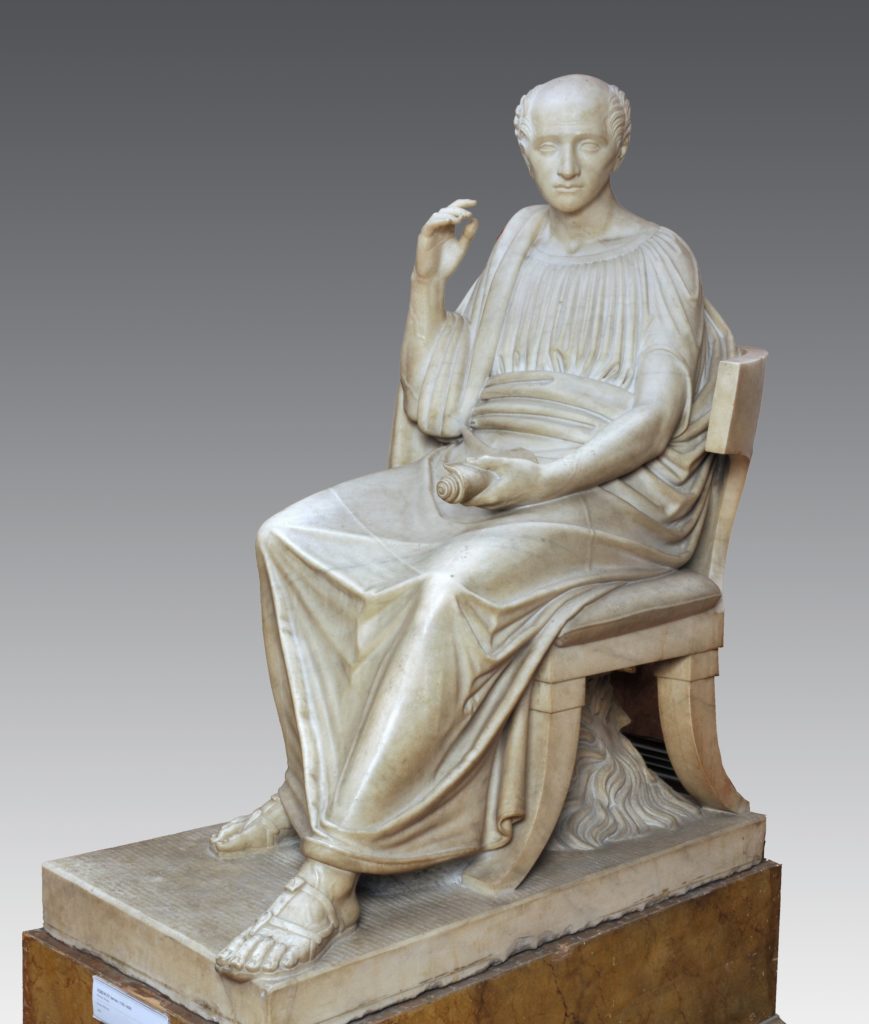We use cookies to provide you with the best possible service and a user-friendly website.
Please find our Privacy Policy on data protection and data management here
Please find more information on the cookies here
Perhaps little else comes to mind about Ferenc Kölcsey, who was born on 8 August 1790, other than the sublime lines of his Hymn [the Hungarian national anthem] or possibly the “sombre ruins” of the Huszt castle, where a “floating nightmarish figure” exhorted the poet to better his homeland. We are familiar with his visage since for generations the suggestive portrait painted of him by Anton Einsle of Austria, preserved in the gallery of the Hungarian Academy of Sciences, has regarded us from the pages of our school textbooks. The tilted head, the bald forehead, the lock of hair over the temple of his head much like a laurel wreath, and of course the sightless right eye defining his face and look, caused by a serious bought of measles in his childhood. However, there were other portraits made of Kölcsey, including István Ferenczy’s largest-scale marble sculpture, which depicts the poet in a sitting posture wearing a toga. But why?

István Ferenczy: Ferenc Kölcsey, 1845, marble, 153 cm, Hungarian National Gallery
István Ferenczy (1792–1856) was the greatest figure of Hungarian sculpture during the Reform Era. He was initially an apprentice under his father to be a blacksmith in Rimaszombat, after which he studied engraving and sculpture in Vienna. He actually walked from Vienna to Rome, where he perfected his knowledge under the greatest sculptors of the age: Bertel Thorvaldsen and Antonio Canova. When István Széchenyi went to Rome, Canova enthusiastically recommended Ferenczy as his outstanding Hungarian student and also as a man well-versed in the museums of Rome, upon which the count asked if Ferenczy could show him Rome’s collections. Ferenczy guided Széchenyi around for two weeks but formed a very negative impression about him, after the count failed to invite the “young picture-maker” for even a bowl of soup. Ferenczy returned to Hungary in 1824. He initially made portrait sculptures, taught and passionately sought a place in Hungary where good quality marble could be found. This is how he discovered excellent Ruszkica marble near Vajdahunyad, from which he carved several works of art. In 1840 he began work on a large-scale plan, the Matthias monument, with the ambition to create the genre of national memorial sculpture. However, his initiative came to nothing since he was unable to collect enough money to implement the work. In the dispute about the sculpture Széchenyi opposed the sculpture project with the argument that no money should be spent on art while there were more important things that needed funds. The poet Mihály Vörösmarty defended Ferenczy saying that the sculptor was not asking the count for money but rather the nation, and added that Széchenyi should have been aware that “without literature language degenerates and finally is lost, and that without art higher national feelings cannot take root…”
Fortunately, Ferenczy did not encounter failure with the Kölcsey sculpture. In autumn of 1838, soon after the poet’s death in the summer of the same year, the Kisfaludy Society initiated the erection of a memorial sculpture. The funds for the sculpture were soon raised through a public charity campaign, and by 1845 Ferenczy had already completed one of the largest-scale works of his life. He intended the work for the garden of the National Museum, but it was never placed in the open air. Ferenczy decided to depict the poet not in Hungarian attire but instead in an antique toga. On the one hand, this was better suited to the classical ideal embraced both by Kölcsey and Ferenczy; on the other hand, it allowed the artist to more profoundly express the immortality of the poet. Time can no longer destroy Kölcsey: this is rendered perceptible by the huge bearded head of the titan Cronus, the personification of time, under the poet’s chair. Attire and costumes convey meaning in works of art in exactly the same way as gestures, objects or facial expressions. Through the toga, Kölcsey, whose works profess the tests of time, was able to occupy his place among the antique classics. The same idea was expressed in 1853 by Imre Vahot, the former publisher of Petőfi’s poetry: “Of the heroes of the modern era, none was more suited to the ideal garb of the ancient Greeks and Romans than Kölcsey, who possessed the character of people from times past.”
7 August 2019


